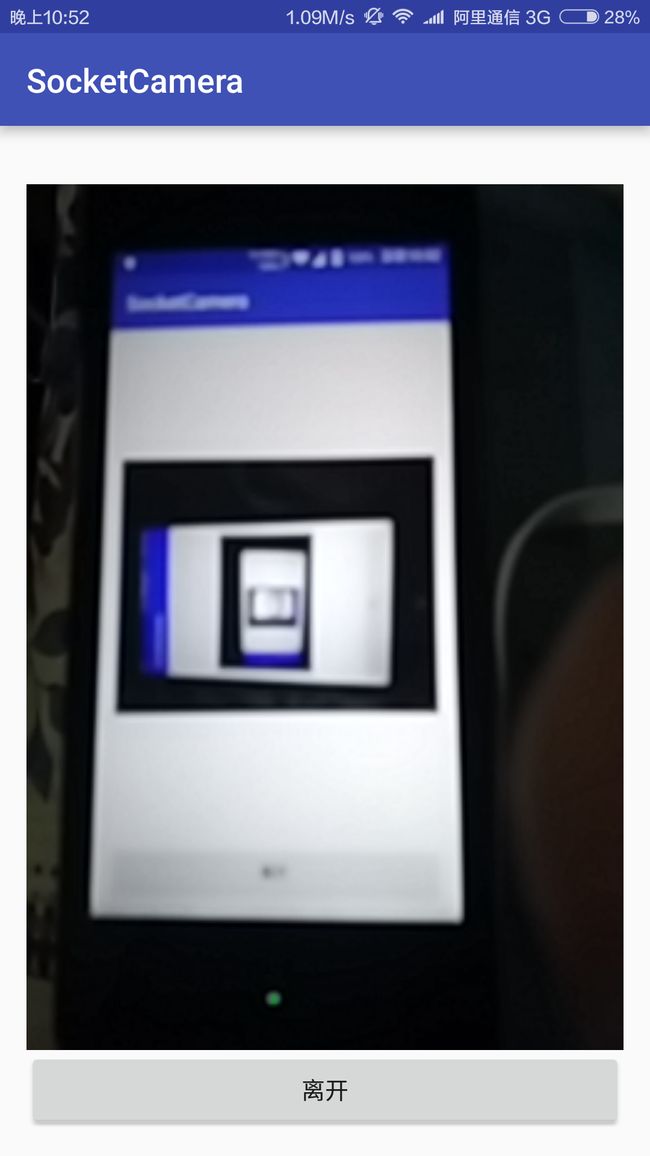- IOS Swift 从入门到精通:BlurEffect BlendMode stroke
hebastast
IOS开发iosswiftcocoa
文章目录UIBlurEffectBlendModestroke基本用法:描边样式:与strokeBorder的区别:组合使用:自定义形状:UIBlurEffect在Swift中,实现模糊效果通常是通过UIKit框架中的UIBlurEffect类来完成的,这通常被称作毛玻璃效果。**创建UIBlurEffect实例:**选择一个模糊效果的样式,如.light、.extraLight、.dark等。l
- PX4 SITL 彻底清理并修复 Protobuf 问题
FHKHH
机器人
PX4SITL彻底清理并修复Protobuf问题适用于ROSNoetic+PX4SITL(Gazebo11)环境本教程适用于在编译PX4SITL时遇到Protobuf版本冲突、CMake找不到正确的Protobuf头文件或库、MAVROS运行错误等问题。我们将彻底清理旧的Protobuf版本,重新安装ROSNoetic和PX4,确保系统使用正确的Protobuf版本。1.彻底移除所有Protobu
- 从0开始制作ArcGis——第一章
geocat
从0开始制作ArcGisarcgisc++shp
一、关于shp文件1.什么是shp文件?2.shp文件的使用场景3.本章结束1.什么是shp文件?shp文件是一个存储了非拓扑几何体及其属性信息的地理特征的数据集。非拓扑:点、线、面等几何体之间并无拓扑关系,每一个记录(几何体)都是各自独立的;属性信息:dbf中存储了描述shp中这些几何体的信息,如点名等地理属性等特征。因为shp文件没有存储几何体之间的拓扑关系,因此shp文件在进行绘制和读写的时
- 搭建一个本地 SMTP 服务器
FHKHH
服务器运维
由于SMTP服务器的开放端口和安全性问题,许多现代邮件服务器不再允许直接通过Telnet连接到标准的25端口发送邮件,尤其是未经认证的用户。因此,许多公共电子邮件服务商如Gmail、Yahoo等也禁用了这种方式,转而要求使用更安全的加密连接,如通过SSL/TLS连接发送邮件。不过,如果你有权限使用某个SMTP服务器(比如你自己公司的邮件服务器或本地服务器),你可以联系你的邮件服务器管理员获取服务器
- Github手动推送和自动推送
FHKHH
github
手动推送你可以按照以下步骤手动将本地仓库的更改推送到远程GitHub仓库,使用个人访问令牌进行身份验证:1.创建个人访问令牌如果还没有创建个人访问令牌,可以按照以下步骤创建:登录到你的GitHub账户。进入Settings页面。在左侧菜单中选择Developersettings。选择Personalaccesstokens,然后点击Generatenewtoken。设置令牌的名称和权限,至少需要r
- Java实现SQLite数据库克隆
行云斡
Java实战演练数据库javasqlite
Java实现SQLite数据库克隆题目要求过程整理分步实现完整代码改进空间转载请注明出处题目要求Writeaprogram(inJavaandusingJDBC)thatclonesaSQLitedatabaseandproducesatextual“backup”ofthecontents.ThistextualbackupshouldconsistofSQLstatementsthatwill
- NO.13十六届蓝桥杯备战|条件操作符|三目操作符|逻辑操作符|!|&&|||(C++)
ChoSeitaku
蓝桥杯备考蓝桥杯c++职场和发展
条件操作符条件操作符介绍条件操作符也叫三⽬操作符,需要接受三个操作数的,形式如下:exp1?exp2:exp3条件操作符的计算逻辑是:如果exp1为真,exp2计算,exp2计算的结果是整个表达式的结果;如果exp1为假,exp3计算,exp3计算的结果是整个表达式的结果。这种三⽬操作符和if语句的逻辑⾮常相似,就是根据exp1的结果来选择执⾏exp2,或者exp3。⼀般使⽤在简单的逻辑判断中。练
- The Devops Handbook 读书笔记01
Alice_HappyAlice ^_^
TheDevopsHandbook读书笔记devops
今天看了一下序,了解了一下Devops这本书是干啥的?ThepurposeoftheDevOpsHandbookistogiveyouthetheory,principles,andpracticesyouneedtosuccessfullystartyourDevOpsinitiativeandachieveyourdesiredoutcomes.Devops原则想要做到的事情,就是更快,更低风
- 蓝桥杯备战 Day3 2022.3.1
Astoria_Csy
蓝桥杯职场和发展
特殊回文数问题描述123321是一个非常特殊的数,它从左边读和从右边读是一样的。输入一个正整数n,编程求所有这样的五位和六位十进制数,满足各位数字之和等于n。数据规模和约定1<=n<=54。这道题昨天没做出来,今天想了一会解决了。总体思路就是枚举10000到1000000之间的所有回文数,然后判断加起来是否等于n。这里注意左边不能设置成9999,不然n=36时,9999加起来也是36,但是是4位数
- Python爬虫:高效获取1688商品详情的实战指南
数据小爬虫@
python爬虫开发语言
在电商行业,数据是商家制定策略、优化运营的核心资源。1688作为国内领先的B2B电商平台,拥有海量的商品信息。通过Python爬虫技术,我们可以高效地获取这些商品详情数据,为商业决策提供有力支持。一、为什么选择Python爬虫?Python以其简洁易读的语法和强大的库支持,成为爬虫开发的首选语言之一。利用Python爬虫,可以快速实现从1688平台获取商品详情的功能,包括商品标题、价格、图片、描述
- python模块triton安装教程
2401_85863780
1024程序员节tritonwhl
Triton是一个用于高性能计算的开源库,特别适用于深度学习和科学计算。通过预编译的whl文件安装Triton可以简化安装过程,尤其是在编译时可能会遇到依赖问题的情况下。以下是详细的安装步骤:安装前准备:Python环境:确保已经安装了Python,并且Python版本与whl文件兼容。pip:确保已经安装了pip,这是Python的包管理器,用来安装外部库。下载whl文件:从可靠的来源下载适用于
- python模块mediapipe安装教程
2401_85863780
python开发语言mediapipe
安装MediaPipe通过.whl文件的方法与安装其他Python库相似。下面是详细的步骤,指导你如何通过.whl文件安装MediaPipe。1.确认Python和pip已经安装首先,确保你的系统上已经安装了Python和pip。你可以通过打开命令行(对于Windows用户,这可以是CMD或PowerShell;对于macOS和Linux用户,这可以是终端)并运行以下命令来检查:python--v
- CCF-CSP认证考试准备第一天
爱coding的橙子
CCF-CSP认证算法数据结构c++
1.规划:刷2019-2023年真题前3道,每年12道,共60道,前面基础暂定一天4道###Day1:1.201903-12.201909-13.202203-14.202206-15.201912-1####1.201903-1:小中大(小模拟)(1)题目:【题目描述】老师给了你一个整数组成的测量数据,保证有序(可能为升序或降序),可能存在重复的数据。请统计出这组测量数据中的最大值、中位数以及最
- Spring Cloud 微服务实战:网关那些事儿
Leaton Lee
springcloudspring
引言:网关在微服务架构中的重要地位在微服务架构中,网关(Gateway)扮演着“守门人”的角色。它不仅是前后端交互的唯一入口,还承担着路由、过滤、负载均衡、安全控制等多种职责。对于一个微服务系统来说,网关的设计和实现直接决定了系统的性能、安全性和可扩展性。我深知网关是大厂面试中的高频考点。无论是BAT还是其他一线互联网公司,面试官总会围绕网关的设计与实现提出一系列问题。例如:如何实现灰度发布?如何
- 蓝桥杯篇---8位 ADC/DAC转换芯片 PCF8591
Ronin-Lotus
蓝桥杯篇嵌入式硬件篇蓝桥杯单片机职场和发展嵌入式硬件cPCF8591ADC/DAC转换
提示:写完文章后,目录可以自动生成,如何生成可参考右边的帮助文档文章目录前言特点1.4路模拟输入2.1路模拟输出3.I2C接口4.低功耗PCF8591引脚说明1.VDD2.VSS3.A0-A34.AIN0-AIN35.AOUT6.SCL7.SDAPCF8591寄存器1.控制寄存器2.数据寄存器PCF8591与IAP25F2K61S2的连接1.SCL2.SDAPCF8591示例代码代码说明注意事项1
- 【C/C++】创建链表例题学习
奇变偶不变0727
c语言链表开发语言
题目:函数接口定义:voidinput();该函数利用scanf从输入中获取学生的信息,并将其组织成单向链表。链表节点结构定义如下:structstud_node{intnum;/*学号*/charname[20];/*姓名*/intscore;/*成绩*/structstud_node*next;/*指向下个结点的指针*/};单向链表的头尾指针保存在全局变量head和tail中。输入为若干个学生
- 基于 Vue +three.js +Photo Sphere Viewer + 高德地图实现 VR 效果
VueVirtuoso
我的学习之路前端vue.js前端框架github交互信息可视化3d
需求背景随着科技的进步,虚拟现实(VR)技术在家居行业的应用越来越普遍。我们项目的目标是通过结合VR看房和实时场景展示,提升用户的体验,用户可以在家中便能身临其境地感受房屋的空间布局和氛围。此外,我们希望通过高德地图提供的标记点功能,帮助用户快速定位感兴趣的区域。业务这边想要实现右边链接的效果阿里云付费全景图,类似VR看房,支持360°x360°任意旋转,支持自定义添加标注,支持切换场景等功能,效
- 1.5 企业级AI大模型四阶技术全景解析:从Prompt到Pre-training的进化路径
少林码僧
掌握先机!从0起步实战AI大模型微调打造核心竞争力人工智能promptchatgptlangchaingpt
企业级AI大模型四阶技术全景解析:从Prompt到Pre-training的进化路径一、技术演进金字塔:四阶技术如何构建AI新范式▲预训练│(万亿参数基建)├─大模型微调│(领域知识注入)├─AI智能体│(任务自动化)└─提示工程(零样本交互)1.1技术层级关系与适用场景技术阶段技术门槛算力需求企业应用成熟度典型工具链提示工程★☆☆☆☆CPU即可90%+企业已部署LangChain、AutoGPT
- 【prompt示例】智能客服+智能质检业务模版
姚瑞南
prompt实战应用案例prompt前端
本文原创作者:姚瑞南AI-agent大模型运营专家,先后任职于美团、猎聘等中大厂AI训练专家和智能运营专家岗;多年人工智能行业智能产品运营及大模型落地经验,拥有AI外呼方向国家专利与PMP项目管理证书。(转载需经授权)整体结构说明:序号结构说明备注1prompt主体提示词主体主要包含定义角色+背景描述+目标+输出内容2变量变量主要提取知识库文档流程里涉及的⼀些判断项,需要接口的部分3注意事项常规注
- 青少年编程与数学 02-009 Django 5 Web 编程 06课题、模型定义
明月看潮生
编程与数学第02阶段青少年编程djangopython编程与数学
青少年编程与数学02-009Django5Web编程06课题、模型定义一、模型二、定义模型1.导入模型类2.定义模型类3.定义字段4.添加元数据(可选)5.定义模型方法(可选)6.迁移模型三、模型字段字符字段数字字段日期和时间字段布尔字段关系字段文件字段其他字段四、主键和索引添加主键添加索引注意事项五、外键定义外键字段`on_delete`参数其他参数示例六、关系1.一对一关系(One-to-On
- 在 Ubuntu 20.04 为 Clash Verge AppImage 创建桌面图标教程
FHKHH
ubuntulinux运维
在Ubuntu20.04为AppImage创建桌面图标教程一、准备工作确保你已经下载了xxxx.AppImage文件,并且知道它所在的具体路径。同时,你可以准备一个合适的图标文件(.png格式)用于代表该应用程序,如果没有合适的图标也不影响后续操作,后续可使用系统默认图标。二、确保AppImage文件可执行AppImage文件需要具备可执行权限才能正常运行。我们可以通过终端命令来赋予其可执行权限。
- 【whl文件】python各版本whl下载地址汇总
2401_85863780
pythonlinux开发语言
whl文件,全称为wheel文件,是Python分发包的一种标准格式。它是预编译的二进制包,包含了Python模块的压缩形式(如.py文件和编译后的.pyd文件)以及这些模块的元数据,通常通过Zip压缩算法进行压缩。whl文件的出现,使得Python包的安装过程变得更为简单和高效,因为它允许用户快速安装Python包及其依赖项,而无需从源代码开始编译。此外,whl文件还具有良好的跨平台兼容性,可以
- 第三章第二十一题(科学:某天是星期几)(Science: day of the week)
xjlovewjh
#第三章课后习题答案java小程序代码规范
**3.21(科学:某天是星期几)泽勒一致性是由克里斯汀泽勒开发的用于计算某天是星期几的算法。这个公式是:h=(q+(26(m+1)/10+k+k/4+j/4+5/j))%7其中:h是一个星期中的某一天(0为星期六;1为星期天;2为星期一;3为星期二;4为星期三;5为星期四;6为星期五)。q是某月的第几天。m是月份(3为三月,4为四月,……,12为十二月)。一月和二月分别记为上一年的13和14月。
- Day48_20250130【回校继续打卡】_单调栈part1_739.每日温度|496.下一个更大元素I|503.下一个更大元素II
Yoyo25年秋招冲冲冲
代码随想录刷题记录算法数据结构javaleetcode动态规划
Day48_20250130_单调栈part1_739.每日温度|496.下一个更大元素I|503.下一个更大元素II20250130补完739.每日温度题目给定一个整数数组temperatures,表示每天的温度,返回一个数组answer,其中answer[i]是指对于第i天,下一个更高温度出现在几天后。如果气温在这之后都不会升置用0来代替。示例1:输入:temperatures=[73,74,
- Codeforces Round 977 (Div. 2)E1 Digital Village (Easy Version)(Floyd,贪心)
Auto114514
Codeforces算法c++数据结构图论
题目链接CodeforcesRound977(Div.2)E1DigitalVillage(EasyVersion)思路首先,我们注意到nnn的最大值只有400400400。因此,我们可以先用FloydFloydFloyd算法预处理出任意两座城市之间的最大延迟时间。之后,我们通过在线操作,每次贪心地选出最优的一个城市,并不断更新答案。即,我们先选出k=1k=1k=1时的最优解,之后从剩下的点里面挑
- LLaMA-Factory 安装linux部署&conda笔记
jayxlb2
llama笔记ai
第一行代码是我导入https://github.com/hiyouga/LLaMA-Factory.git到我的项目那里的,试过网上随便搜索过相同,估计没更新,安装了几次都运行失败,克隆了最新的就安装成功了。方法1没虚拟环境:不知道成不成功,我使用conda管理安装的gitclonehttps://gitcode.com/wengxiezhen2671/LLaMA-Factory.gitcdLLa
- 计算机网络面试题库
小孟Java攻城狮
计算机网络面试职场和发展java
HTTP1.0和2.0有什么区别?头部:1.0不支持头部压缩,2.0支持头部压缩()HPACK压缩1.0每个连接都要独立的TCP,2.0引入了stream的概念,解决了队头阻塞二进制头部,2.0使用二进制头部,成为二进制帧,提高传输效率顺序请求响应模型,1.0客户端有主动权,2.0允许服务器向客户端发送资源,而不是客户端明确请求HTTP2.0和3.0有什么区别?2.0基于TCP协议3.0基于QUI
- 第六篇:数字逻辑的“矩阵革命”——域控制器中的组合电路设计
天天爱吃肉8218
学习笔记矩阵线性代数汽车笔记
副标题:用卡诺图破解车身域控制器的逻辑迷宫,揭秘华为DriveONE的“数字特工”▍开篇:黑客帝国世界观映射>"WelcometotheRealWorld."——Morpheus>在数字逻辑的世界里,组合电路就是构建Matrix的底层代码。当新能源汽车的域控制器需要同时处理车门锁、灯光控制、热管理信号时,就像Neo同时躲避多个特工的追击——只有最优化的逻辑设计,才能让系统在纳秒级响应中游刃有余。核
- 代码随想录-算法训练营day30(回溯算法06:重新安排行程,N皇后,数独,回溯算法总结)
java菜鸡加油
算法
第七章回溯算法part06●332.重新安排行程●51.N皇后●37.解数独●总结详细布置今天这三道题都非常难,那么这么难的题,为啥一天做三道?因为一刷也不求大家能把这么难的问题解决,所以大家一刷的时候,就了解一下题目的要求,了解一下解题思路,不求能直接写出代码,先大概熟悉一下这些题,二刷的时候,随着对回溯算法的深入理解,再去解决如下三题。大家今天的任务,其实是对回溯算法章节做一个总结就行。重点是
- JAVA学习-类型信息.动态代理
守护者170
java学习java学习开发语言
在Java中,动态代理是一种通过在运行时生成代理对象来拦截对目标对象的访问的技术。Java中的动态代理基于反射机制,利用反射生成代理类来实现对目标对象的代理。一、Java中的动态代理主要有两种方式:基于接口的动态代理和基于类的动态代理。它们的特点如下:1.基于接口的动态代理(JDK动态代理):基于接口的动态代理要求目标对象实现一个或多个接口。JDK动态代理使用'java.lang.reflect.
- java工厂模式
3213213333332132
java抽象工厂
工厂模式有
1、工厂方法
2、抽象工厂方法。
下面我的实现是抽象工厂方法,
给所有具体的产品类定一个通用的接口。
package 工厂模式;
/**
* 航天飞行接口
*
* @Description
* @author FuJianyong
* 2015-7-14下午02:42:05
*/
public interface SpaceF
- nginx频率限制+python测试
ronin47
nginx 频率 python
部分内容参考:http://www.abc3210.com/2013/web_04/82.shtml
首先说一下遇到这个问题是因为网站被攻击,阿里云报警,想到要限制一下访问频率,而不是限制ip(限制ip的方案稍后给出)。nginx连接资源被吃空返回状态码是502,添加本方案限制后返回599,与正常状态码区别开。步骤如下:
- java线程和线程池的使用
dyy_gusi
ThreadPoolthreadRunnabletimer
java线程和线程池
一、创建多线程的方式
java多线程很常见,如何使用多线程,如何创建线程,java中有两种方式,第一种是让自己的类实现Runnable接口,第二种是让自己的类继承Thread类。其实Thread类自己也是实现了Runnable接口。具体使用实例如下:
1、通过实现Runnable接口方式 1 2
- Linux
171815164
linux
ubuntu kernel
http://kernel.ubuntu.com/~kernel-ppa/mainline/v4.1.2-unstable/
安卓sdk代理
mirrors.neusoft.edu.cn 80
输入法和jdk
sudo apt-get install fcitx
su
- Tomcat JDBC Connection Pool
g21121
Connection
Tomcat7 抛弃了以往的DBCP 采用了新的Tomcat Jdbc Pool 作为数据库连接组件,事实上DBCP已经被Hibernate 所抛弃,因为他存在很多问题,诸如:更新缓慢,bug较多,编译问题,代码复杂等等。
Tomcat Jdbc P
- 敲代码的一点想法
永夜-极光
java随笔感想
入门学习java编程已经半年了,一路敲代码下来,现在也才1w+行代码量,也就菜鸟水准吧,但是在整个学习过程中,我一直在想,为什么很多培训老师,网上的文章都是要我们背一些代码?比如学习Arraylist的时候,教师就让我们先参考源代码写一遍,然
- jvm指令集
程序员是怎么炼成的
jvm 指令集
转自:http://blog.csdn.net/hudashi/article/details/7062675#comments
将值推送至栈顶时 const ldc push load指令
const系列
该系列命令主要负责把简单的数值类型送到栈顶。(从常量池或者局部变量push到栈顶时均使用)
0x02 &nbs
- Oracle字符集的查看查询和Oracle字符集的设置修改
aijuans
oracle
本文主要讨论以下几个部分:如何查看查询oracle字符集、 修改设置字符集以及常见的oracle utf8字符集和oracle exp 字符集问题。
一、什么是Oracle字符集
Oracle字符集是一个字节数据的解释的符号集合,有大小之分,有相互的包容关系。ORACLE 支持国家语言的体系结构允许你使用本地化语言来存储,处理,检索数据。它使数据库工具,错误消息,排序次序,日期,时间,货
- png在Ie6下透明度处理方法
antonyup_2006
css浏览器FirebugIE
由于之前到深圳现场支撑上线,当时为了解决个控件下载,我机器上的IE8老报个错,不得以把ie8卸载掉,换个Ie6,问题解决了,今天出差回来,用ie6登入另一个正在开发的系统,遇到了Png图片的问题,当然升级到ie8(ie8自带的开发人员工具调试前端页面JS之类的还是比较方便的,和FireBug一样,呵呵),这个问题就解决了,但稍微做了下这个问题的处理。
我们知道PNG是图像文件存储格式,查询资
- 表查询常用命令高级查询方法(二)
百合不是茶
oracle分页查询分组查询联合查询
----------------------------------------------------分组查询 group by having --平均工资和最高工资 select avg(sal)平均工资,max(sal) from emp ; --每个部门的平均工资和最高工资
- uploadify3.1版本参数使用详解
bijian1013
JavaScriptuploadify3.1
使用:
绑定的界面元素<input id='gallery'type='file'/>$("#gallery").uploadify({设置参数,参数如下});
设置的属性:
id: jQuery(this).attr('id'),//绑定的input的ID
langFile: 'http://ww
- 精通Oracle10编程SQL(17)使用ORACLE系统包
bijian1013
oracle数据库plsql
/*
*使用ORACLE系统包
*/
--1.DBMS_OUTPUT
--ENABLE:用于激活过程PUT,PUT_LINE,NEW_LINE,GET_LINE和GET_LINES的调用
--语法:DBMS_OUTPUT.enable(buffer_size in integer default 20000);
--DISABLE:用于禁止对过程PUT,PUT_LINE,NEW
- 【JVM一】JVM垃圾回收日志
bit1129
垃圾回收
将JVM垃圾回收的日志记录下来,对于分析垃圾回收的运行状态,进而调整内存分配(年轻代,老年代,永久代的内存分配)等是很有意义的。JVM与垃圾回收日志相关的参数包括:
-XX:+PrintGC
-XX:+PrintGCDetails
-XX:+PrintGCTimeStamps
-XX:+PrintGCDateStamps
-Xloggc
-XX:+PrintGC
通
- Toast使用
白糖_
toast
Android中的Toast是一种简易的消息提示框,toast提示框不能被用户点击,toast会根据用户设置的显示时间后自动消失。
创建Toast
两个方法创建Toast
makeText(Context context, int resId, int duration)
参数:context是toast显示在
- angular.identity
boyitech
AngularJSAngularJS API
angular.identiy 描述: 返回它第一参数的函数. 此函数多用于函数是编程. 使用方法: angular.identity(value); 参数详解: Param Type Details value
*
to be returned. 返回值: 传入的value 实例代码:
<!DOCTYPE HTML>
- java-两整数相除,求循环节
bylijinnan
java
import java.util.ArrayList;
import java.util.List;
public class CircleDigitsInDivision {
/**
* 题目:求循环节,若整除则返回NULL,否则返回char*指向循环节。先写思路。函数原型:char*get_circle_digits(unsigned k,unsigned j)
- Java 日期 周 年
Chen.H
javaC++cC#
/**
* java日期操作(月末、周末等的日期操作)
*
* @author
*
*/
public class DateUtil {
/** */
/**
* 取得某天相加(减)後的那一天
*
* @param date
* @param num
*
- [高考与专业]欢迎广大高中毕业生加入自动控制与计算机应用专业
comsci
计算机
不知道现在的高校还设置这个宽口径专业没有,自动控制与计算机应用专业,我就是这个专业毕业的,这个专业的课程非常多,既要学习自动控制方面的课程,也要学习计算机专业的课程,对数学也要求比较高.....如果有这个专业,欢迎大家报考...毕业出来之后,就业的途径非常广.....
以后
- 分层查询(Hierarchical Queries)
daizj
oracle递归查询层次查询
Hierarchical Queries
If a table contains hierarchical data, then you can select rows in a hierarchical order using the hierarchical query clause:
hierarchical_query_clause::=
start with condi
- 数据迁移
daysinsun
数据迁移
最近公司在重构一个医疗系统,原来的系统是两个.Net系统,现需要重构到java中。数据库分别为SQL Server和Mysql,现需要将数据库统一为Hana数据库,发现了几个问题,但最后通过努力都解决了。
1、原本通过Hana的数据迁移工具把数据是可以迁移过去的,在MySQl里面的字段为TEXT类型的到Hana里面就存储不了了,最后不得不更改为clob。
2、在数据插入的时候有些字段特别长
- C语言学习二进制的表示示例
dcj3sjt126com
cbasic
进制的表示示例
# include <stdio.h>
int main(void)
{
int i = 0x32C;
printf("i = %d\n", i);
/*
printf的用法
%d表示以十进制输出
%x或%X表示以十六进制的输出
%o表示以八进制输出
*/
return 0;
}
- NsTimer 和 UITableViewCell 之间的控制
dcj3sjt126com
ios
情况是这样的:
一个UITableView, 每个Cell的内容是我自定义的 viewA viewA上面有很多的动画, 我需要添加NSTimer来做动画, 由于TableView的复用机制, 我添加的动画会不断开启, 没有停止, 动画会执行越来越多.
解决办法:
在配置cell的时候开始动画, 然后在cell结束显示的时候停止动画
查找cell结束显示的代理
- MySql中case when then 的使用
fanxiaolong
casewhenthenend
select "主键", "项目编号", "项目名称","项目创建时间", "项目状态","部门名称","创建人"
union
(select
pp.id as "主键",
pp.project_number as &
- Ehcache(01)——简介、基本操作
234390216
cacheehcache简介CacheManagercrud
Ehcache简介
目录
1 CacheManager
1.1 构造方法构建
1.2 静态方法构建
2 Cache
2.1&
- 最容易懂的javascript闭包学习入门
jackyrong
JavaScript
http://www.ruanyifeng.com/blog/2009/08/learning_javascript_closures.html
闭包(closure)是Javascript语言的一个难点,也是它的特色,很多高级应用都要依靠闭包实现。
下面就是我的学习笔记,对于Javascript初学者应该是很有用的。
一、变量的作用域
要理解闭包,首先必须理解Javascript特殊
- 提升网站转化率的四步优化方案
php教程分享
数据结构PHP数据挖掘Google活动
网站开发完成后,我们在进行网站优化最关键的问题就是如何提高整体的转化率,这也是营销策略里最最重要的方面之一,并且也是网站综合运营实例的结果。文中分享了四大优化策略:调查、研究、优化、评估,这四大策略可以很好地帮助用户设计出高效的优化方案。
PHP开发的网站优化一个网站最关键和棘手的是,如何提高整体的转化率,这是任何营销策略里最重要的方面之一,而提升网站转化率是网站综合运营实力的结果。今天,我就分
- web开发里什么是HTML5的WebSocket?
naruto1990
Webhtml5浏览器socket
当前火起来的HTML5语言里面,很多学者们都还没有完全了解这语言的效果情况,我最喜欢的Web开发技术就是正迅速变得流行的 WebSocket API。WebSocket 提供了一个受欢迎的技术,以替代我们过去几年一直在用的Ajax技术。这个新的API提供了一个方法,从客户端使用简单的语法有效地推动消息到服务器。让我们看一看6个HTML5教程介绍里 的 WebSocket API:它可用于客户端、服
- Socket初步编程——简单实现群聊
Everyday都不同
socket网络编程初步认识
初次接触到socket网络编程,也参考了网络上众前辈的文章。尝试自己也写了一下,记录下过程吧:
服务端:(接收客户端消息并把它们打印出来)
public class SocketServer {
private List<Socket> socketList = new ArrayList<Socket>();
public s
- 面试:Hashtable与HashMap的区别(结合线程)
toknowme
昨天去了某钱公司面试,面试过程中被问道
Hashtable与HashMap的区别?当时就是回答了一点,Hashtable是线程安全的,HashMap是线程不安全的,说白了,就是Hashtable是的同步的,HashMap不是同步的,需要额外的处理一下。
今天就动手写了一个例子,直接看代码吧
package com.learn.lesson001;
import java
- MVC设计模式的总结
xp9802
设计模式mvc框架IOC
随着Web应用的商业逻辑包含逐渐复杂的公式分析计算、决策支持等,使客户机越
来越不堪重负,因此将系统的商业分离出来。单独形成一部分,这样三层结构产生了。
其中‘层’是逻辑上的划分。
三层体系结构是将整个系统划分为如图2.1所示的结构[3]
(1)表现层(Presentation layer):包含表示代码、用户交互GUI、数据验证。
该层用于向客户端用户提供GUI交互,它允许用户
